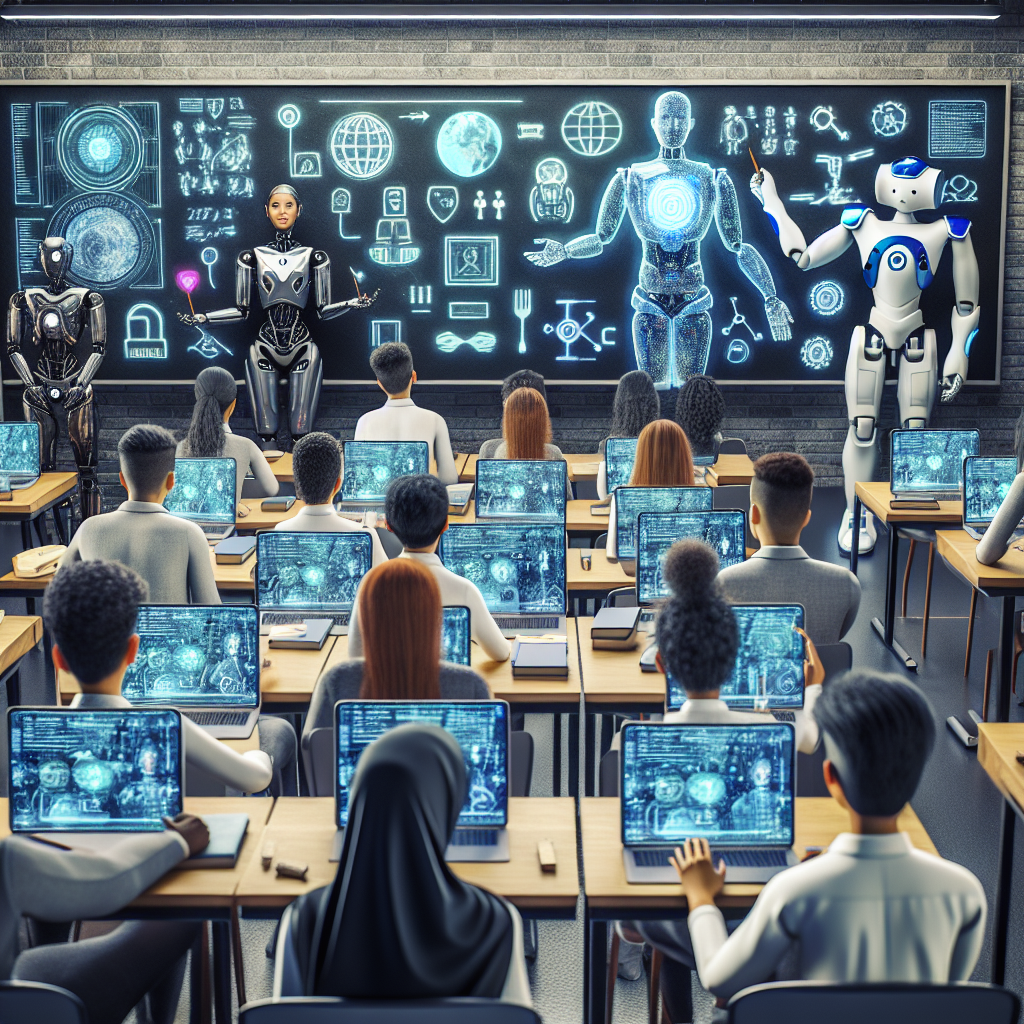Artificial General Intelligence (AGI) is a powerful technology that has the potential to revolutionize the field of education. AGI refers to a type of artificial intelligence that possesses the ability to understand, learn, and apply knowledge in a broad range of tasks, much like a human. This level of intelligence goes beyond narrow AI systems, which are designed for specific tasks and lack the ability to generalize their knowledge.
In recent years, AI has made significant strides in the field of education, offering personalized learning experiences, automating administrative tasks, and providing valuable insights into student performance. As AGI continues to evolve, its impact on education is expected to be even more profound.
How AGI is Shaping the Future of Learning
Personalized Learning
One of the key benefits of AGI in education is its ability to personalize learning experiences for students. By analyzing vast amounts of data on student performance, behavior, and preferences, AGI can create tailored learning pathways that cater to each individual’s needs and learning style. This personalized approach helps students stay engaged, motivated, and ultimately, achieve better outcomes.
For example, AGI-powered platforms can adapt the pace and difficulty of lessons based on a student’s performance, provide real-time feedback and support, and recommend additional resources or activities to reinforce learning. This level of customization ensures that each student receives the support they need to succeed, regardless of their background or learning abilities.
Automated Administrative Tasks
AGI can also streamline administrative tasks in education, freeing up valuable time for teachers and administrators to focus on teaching and student support. From grading assignments and assessments to scheduling classes and managing student records, AGI-powered systems can automate routine tasks, reduce errors, and increase efficiency.
For instance, AI chatbots can handle basic student queries, such as assignment deadlines or course information, freeing up teachers to focus on more complex tasks. Similarly, predictive analytics tools can help schools identify at-risk students early on and provide targeted interventions to improve their academic outcomes.
Insights and Analytics
Another significant advantage of AGI in education is its ability to provide valuable insights and analytics on student performance and learning trends. By analyzing data on student behavior, engagement, and outcomes, AGI can identify patterns, predict future performance, and suggest interventions to improve learning outcomes.
For example, AGI-powered systems can analyze student assessments to identify areas of strength and weakness, track progress over time, and recommend personalized study plans to address individual learning gaps. This level of data-driven insight enables educators to make informed decisions, tailor instruction to student needs, and ultimately, enhance the overall learning experience.
Challenges and Considerations
Despite its potential benefits, the integration of AGI in education comes with its own set of challenges and considerations. For one, there are concerns about data privacy and security, as AGI systems collect and analyze large amounts of sensitive student information. Schools must ensure that proper safeguards are in place to protect student data and comply with privacy regulations.
Additionally, there are ethical considerations surrounding the use of AGI in education, such as bias in algorithms, transparency in decision-making, and accountability for outcomes. Educators and policymakers must address these concerns to ensure that AGI is used ethically and responsibly in the learning environment.
Furthermore, there is a need for ongoing professional development and training for educators to effectively leverage AGI in their teaching practices. Teachers must be equipped with the skills and knowledge to use AI tools and technologies, interpret data insights, and integrate AGI into their instructional strategies.
FAQs
Q: What is the difference between AGI and narrow AI in education?
A: AGI refers to artificial intelligence that possesses the ability to understand, learn, and apply knowledge in a broad range of tasks, much like a human. Narrow AI, on the other hand, is designed for specific tasks and lacks the ability to generalize its knowledge. In education, AGI can provide personalized learning experiences, automate administrative tasks, and offer valuable insights into student performance.
Q: How can AGI benefit students in the learning process?
A: AGI can benefit students in the learning process by providing personalized learning experiences, automating administrative tasks, and offering valuable insights into student performance. By analyzing data on student behavior, engagement, and outcomes, AGI can create tailored learning pathways, automate routine tasks, and recommend interventions to improve learning outcomes.
Q: What are some of the challenges of integrating AGI in education?
A: Some of the challenges of integrating AGI in education include concerns about data privacy and security, ethical considerations surrounding bias in algorithms and transparency in decision-making, and the need for ongoing professional development and training for educators. Schools must ensure that proper safeguards are in place to protect student data, address ethical concerns, and provide educators with the skills and knowledge to effectively leverage AGI in their teaching practices.

